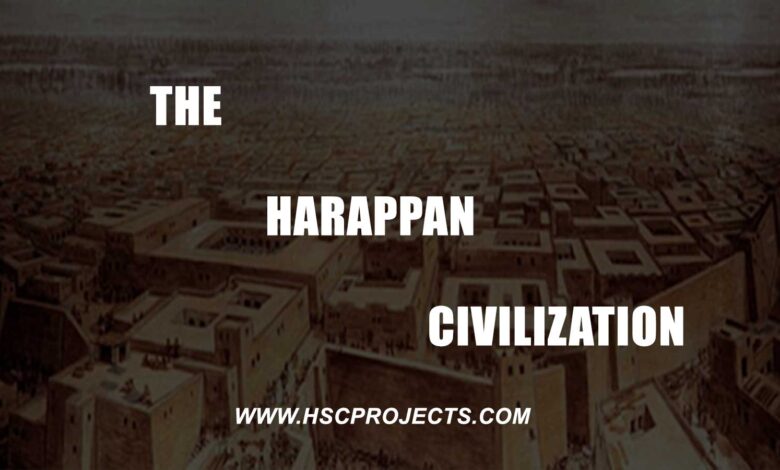
The Harappan Civilization Introduction – Class 12 Arts
HARAPPAN CIVILIZATION INTRODUCTION
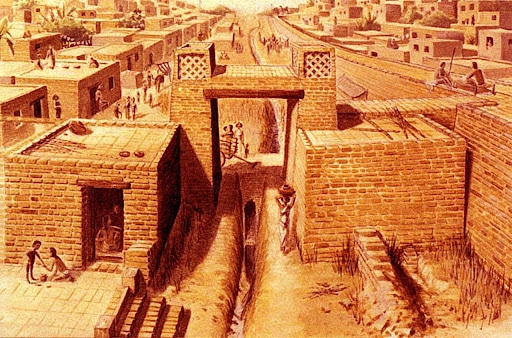
Harappan civilization was discovered in 1920-22 when two of its most important sites were excavated. These were Harappa on the banks of the river Ravi and Mohenjo-Daro on the banks of the Indus. The first was excavated by D.R. Sahani and the second by R.D. Banerji based on the archaeological findings of the Harappan civilization of the world. It is also sometimes referred to as the ‘Indus valley civilization’ because in the beginning majority of its settlements discovered were in and around the plains of the river Indus and its tributaries.
But today it is termed the Harappan civilization introduction because Harappa was the first site that brought to light the presence of this civilization besides recent archaeological findings indicate that this civilization was spread much beyond the Indus valley therefore it should be called the Harappan civilization introduction was the first urban culture of India and is contemporaneous with other ancient civilization of the world such as those of Mesopotamia and Egypt.
Our knowledge of the life and culture of the Harappan people is based only on the archaeological excavations as the script of that period has not been deciphered so far. Ancient authority of harappan civilization was run by Mohenjo Daro. There are many history project on harappan civilizationg to help kids learn and understand the importance of it. They are available in many forms such as harappan civilization project pdf.
SUBSISTENCE STRATEGIES
Harappan civilization class 12 has more in dept findings and articles about harappan civilization with the focus mainly on mohenjo daro.
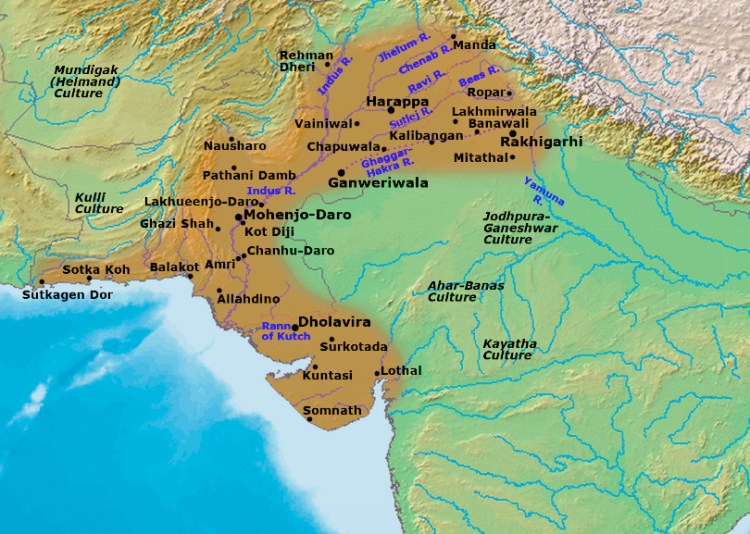
The Harappan ate a wide range of plant and animal products, including fish. Archaeologists have been able to reconstruct dietary practices from finds of charred grains and seeds. These are studies by archaeo-botanists who are specialists in ancient plant remains grains found at Harappan sites including archaeological lentils, chickpea, and sesame.
Millets are found from sites in Gujarat finds of rice are relatively rare. Animal bones found at Harappan sites include those of cattle sheep goats and buffalo studies done by archaeo-zoologists or zoo-archaeologists indicate that these animals were domesticated. Bones of wild species such as boar deer and gharial are also found.
AGRICULTURAL TECHNOLOGIES

While the prevalence of agriculture is indicated by finds of grain, it is more difficult to reconstruct actual agricultural practices. Representations on seals and terracotta sculpture indicate that the bull was known and archaeologists extrapolate from this that oxen were used for plowing moreover practice used for plough have been at sites in cholistan and at Banaras. (Haryana).
Archaeologists have also found evidence of a plowed field at kalibangan (Rajasthan) associated with early Harappan levels. The field had two sets of funerals at right angles to each other suggesting that two different crops were grown together.
MOHENJO-DARO
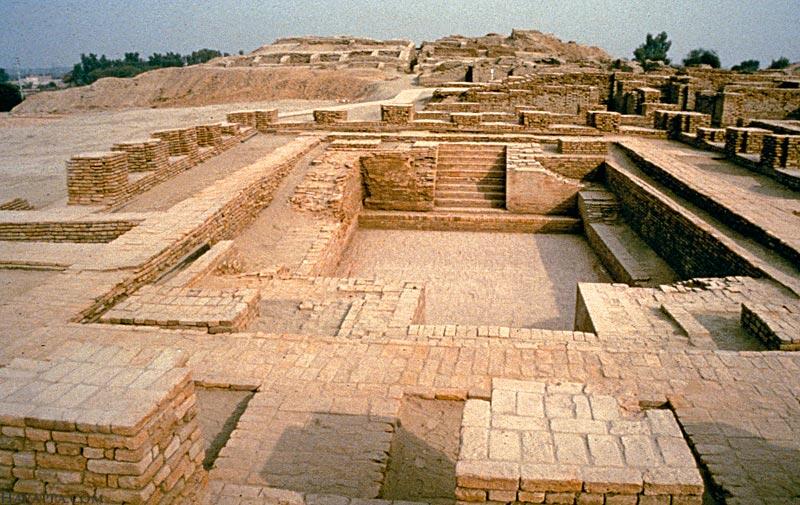
Mohenjo-Daro, or “Mound of the Dead” is an ancient Indus valley civilization city that flourished between 2600 and 1900 BCE. It was one of the first world and ancient Indian cities. The site was discovered in the 1920s and lies in Pakistan Sind province.
Ancient authority of harappan civilization Mohenjo-Daro is an ancient planned city laid out on a grid of streets in the north-south and east-west directions the widest streets run north-south straight town secondary streets run east-west, sometimes in a staggered direction. Secondary streets are about half the width of the main streets; smaller alleys are a third to a quarter of the width of the main streets.
DHOLAVIRA
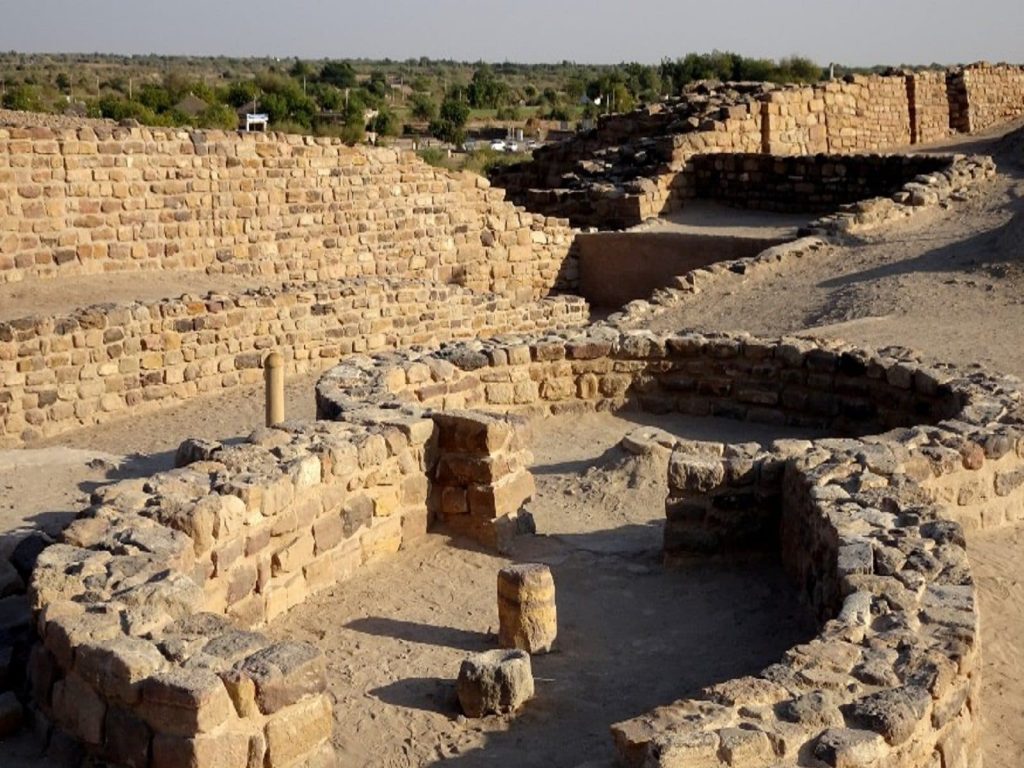
Being one of the five largest Harappan cities in the subcontinent, Dholavira has yielded many firsts in respect of Indus civilization. Fourteen field seasons of excavation through an enormous deposit caused by the successive settlements at the site for over 1500 years during all through the 3rd millennium and unto the middle of the 2nd millennium BC have revealed seven significant cultural stages documenting the rise and fall of the Indus civilization in addition to bringing to light a major a model city which is remarkable for its exquisite planning monumental structures aesthetic architecture amazing water harvesting system and a variety in funerary architecture.
It also enjoys the unique distinction of yielding an inscription made up of ten large-sized signs of the Indus script not less important is all houses had two stories and only the larger houses had their wells. There are also rows of singles soldiers or slaves.
ALLEY
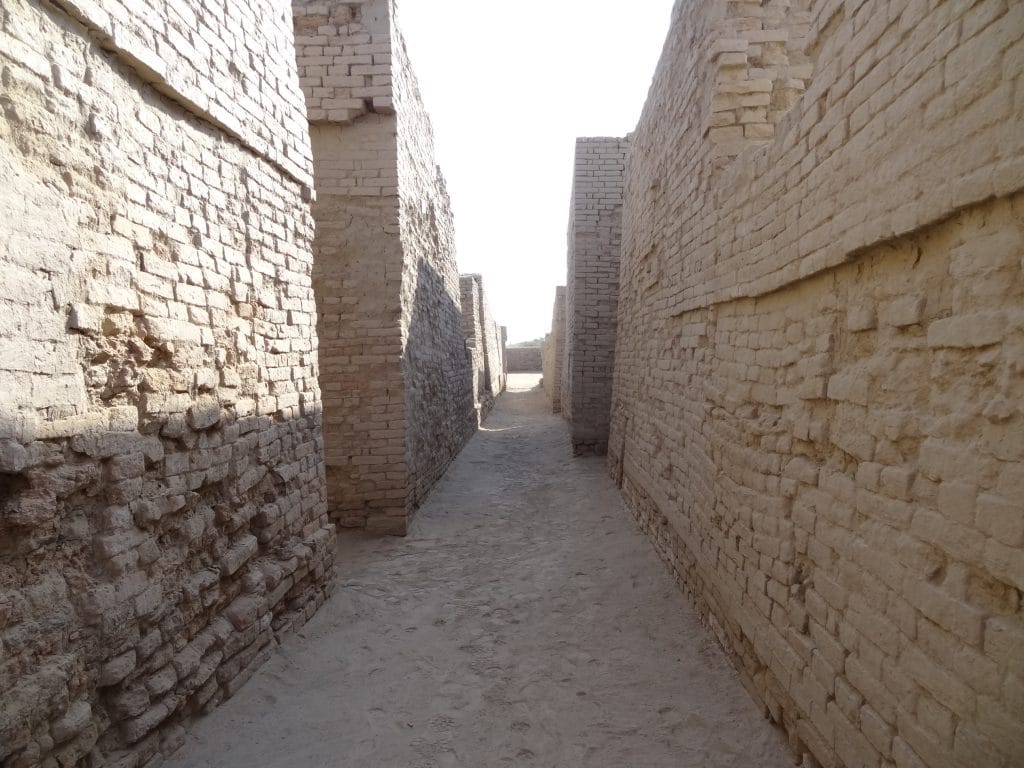
The large platform called the ‘citadel’ is presumed to be the administrative seat. Other public buildings are temples and public buildings are temples and public baths. There are also granaries where the stores are elevated above brick platforms that have ventilation ducts.
Separated from the domestic areas are the artisan workshops. The street layout shows an understanding of the basic principles of traffic rounded corners to allow the turning of carts easily. The drains are covered. The city probably had around 35,000 residents.
COURTYARD HOUSE
The house was planned as a series of rooms opening onto a central courtyard providing an open space inside for community activities. There were no openings toward the main street-only rather small openings to the slide streets. Brick stairways provided access to the upper floors or rooftop gardens.
The houses are believed to have flat, timber roofs. Houses were built with a perimeter wall and adjacent houses were separated by a narrow space of land. There were just a few fairly standardized layouts, perhaps an indication of a fairly egalitarian society.
DHALAVIRA
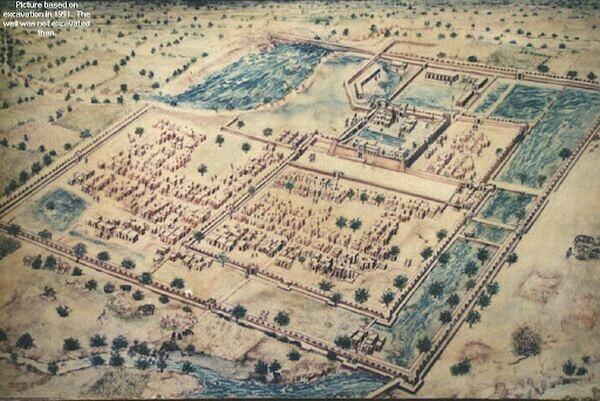
Being one of the five largest Harappan cities in the subcontinent, ancient authority of harappan civilization Dholavira has yielded many firsts in respect of Indus civilization.
Fourteen field seasons of excavation through an enormous deposit caused by the successive settlements at the site for over 1500 years during all through the 3rd millennium and unto the middle of the 2nd millennium BC have revealed seven significant cultural stages documenting the rise and fall of the Indus civilization in addition to bringing to light a major a model city which is remarkable for its exquisite planning monumental structures aesthetic architecture amazing water harvesting system and a variety in funerary architecture.
It also enjoys the unique distinction of yielding an inscription made up of ten large-sized signs of the Indus script and not less in importance is the other find of a fragment of a large slab engraved with three large signs. This paper attempts to give an account of hydro-engineering that is manifest in the structures of the Harappan at Dholavira.
MAIN FEATURES
The salient components of the full-grown cityscape consisted of a bipartite ‘citadel’ a middle town and a lower town two stadia and annexed a series of reservoirs all set within an enormous fortification running on all four sides. Interestingly the city was perhaps, configured like a large parallelogram outlined by massive walls with their land axis being from the east to west on the bases of their relative location planning defenses and architecture the three principal divisions are designed tentatively as citadel middle town and lower town.
The citadel at dholavira unlike its counterparts at Mohenjo-Daro Harappa and kalibangan but like that at Banawali was laid out in the south of the city area like kalibangan and surkotada it had two conjoined subdivisions, tentatively christened at Dholavira as ‘castle’ and bailey, located on the east and west respectively both are fortified ones.
SIGNBOARD
Generally, Harappan inscriptions are short containing only four letters or less than four letters. However, this above-given signboard of Dholavira is different it contains 10 letters and is quite lengthy compared to inscriptions on seals of the Harappan civilization. Analysis of this inscription shows that most probably the objective of the signboard is different from the regular Indus seals encountered so far.
The place of finding an object in the archaeological site is important to interpret the nature of an object. Historians’ interpretation is that “Dholavira” is a “burial place” because it is being described as “Dholavira-Bhoot Pradesh” further as the skeleton was found in a sitting position near this “Dholavira signboard “ (as per the information given by the guide not yet verified). “ Bhoot Pradesh” shows that Dholavira was a kind of burial place and not a place for living people.
What some other archaeologists interpret about the “signboard” is that it could be indicating the name of the person who had been buried in this place further, excavation below this signboard will reveal that there is the possibility of finding a skeleton below the signboard. The signboard is nothing but an “epitaph” (an inscription on a tombstone in memory of the dead person over his grave).
The analysis of the symbol involved shows that this signboard has been written in the last phase of “Indus Valley civilization” and the impact of Sanskrit words could be easily visualized.
BURIALS
Archaeologists generally use certain strategies to find out whether there were social or economic differences amongst people living within a particular culture. These include studying burials. Many of these pyramids of Egypt were associated with the Harappan civilization pyramids were of royal burials where enormous quantities of wealth were buried.
At burials in Harappan sites, the dead were generally laid in pits sometimes there were differences in the way the burial pit was made-in some instances, the hollowed-out spaces were lined with bricks. Some graves contain pottery and ornaments, perhaps indicating a belief that these could be used in the afterlife jewelry has been found in burials of both men and women.
LOOKING FOR LUXURIES
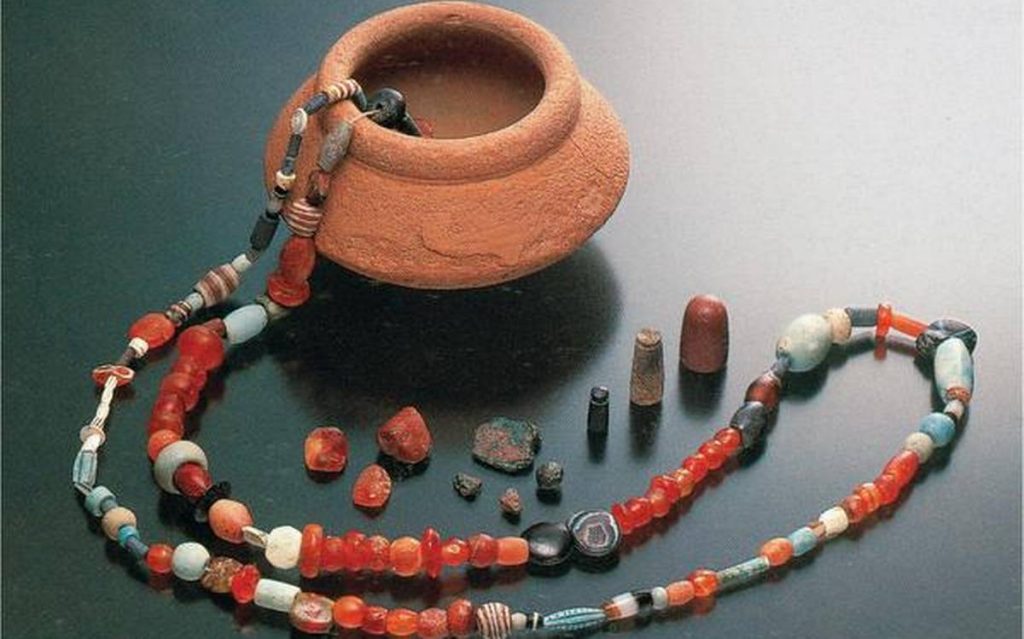
Another strategy to identify social differences is to study artifacts that archaeologists broadly classify as utilization and luxuries. The first category includes objects of daily use made fairly easily out of ordinary materials such as stone or clay these include querns pottery needles, flesh-rubbers(body scrubbers), etc and are usually found distributed throughout settlements.
Archaeologists assume objects were luxuries if they are rare or made from costly non-local materials or with complicated technologies. Thus little pots of faience (a material made of ground sand or silica mixed with color and gum and then fixed) were probably considered precious because they were difficult to make.
CRAFT INDUSTRY AND FACTS

Evidence of shell working was found at chanhudaro and bangles and ladles were made at this site. Harappan seals were made generally in bigger towns like Harappa, Mohenjo-Daro, and chanhudaro which were involved with the administrative networks.
An impressive workshop recognized as bead making factory was found at chanhudaro which included furnace shell bangles beads of many materials, steatite seals, and metal works were manufactured at chanhudaro. Copper knives, spears, razors, tools, axes, vessels, and dishes were found inspiring this site to be nicknamed “Sheffield od India”.
Copper fish hooks were also recovered from this site. Terracotta cart model small terracotta bird when blown acts as little plates, dishes were found male spear thrower or dancer-a broken statue (4.1cm) is of much importance found at chanhudaro Indus seals are also found at chanhudaro for building houses baked bricks were used extensively at chanhudaro and Mohenjo-Daro several constructions were identified and some of the buildings of chanhudaro might have been warehouses.
STRATEGIES FOR PROCURING MATERIALS
The Harappans procured materials for craft production in various ways for instance they established settlements such as Nageshwar and Balakot in areas where the shell was available other such sites were shorthair in far off Afghanistan near the best source of lapis lazuli a blue stone that was very highly valued and local which was near sources of carnelian (from Bharuch in Gujarat), steatite (from south Rajasthan and north Gujarat) and metal (from Rajasthan).
Another strategy for procuring raw materials may have been to send expeditions to areas such as the Khatri region of Rajasthan (for copper) and south India (for gold). These expeditions established communication with local communities occasional finds of Harappan artifacts such as steatite microbeads in these areas are indications of such contact.
There is evidence in the Khatri area of what archaeologists call the Rameshwar-Jodhpur culture with its distinctive non-Harappan pottery and an unusual wealth of copper objects. It is possible that the inhabitants of this region supplied copper to the Harappans.
SEALS AND SEALING
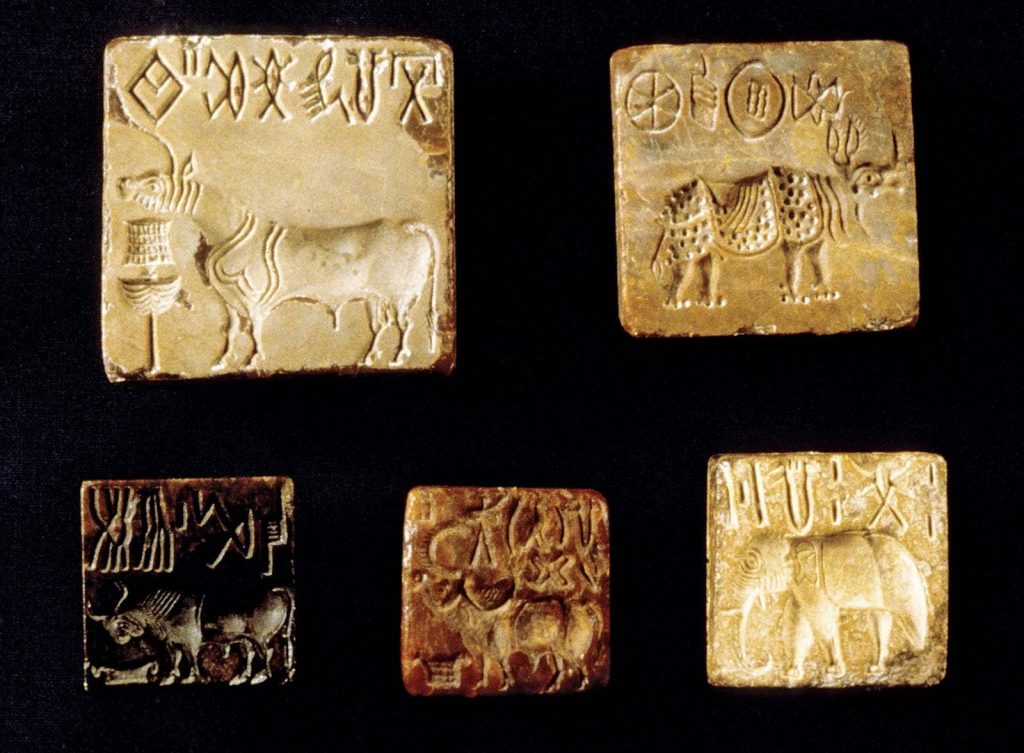
Seals and sealings were used to facilitate long-distance communication. Imagine a bag of goods being sent from one place to another. Its mouth was tied with rope and on the knot was affixed some wet clay on which one or more seals were pressed with its sealing intact it meant it had not been tampered with. The sealing also conveyed the identity of the sender.
The most interesting part of the discovery relates to the seals-more than 2000 in number made of soapstone terracotta and copper. The seals give us useful information about the civilization of the Indus valley. The seals are rectangular circular or even cylindrical.
AN ENIGMATIC SCRIPT
Harappan seals usually have a line of writing probably containing the name and title of the owner. Scholars have also suggested that the motif (generally an animal) conveyed a meaning to those who could not read. Most inscriptions are short the longest containing about 26 signs.
Although the script remains undeciphered to date, it was not alphabetical where each sign stands for a vowel or a consonant as it has just so many signs somewhere between 375 and 400. It is apparent that the script showed a wider spacing on the right and cramping on the left as if the engraver began working from the right and then ran out of space.
ANCIENT AUTHORITY
There are indications of complex decisions being taken and implemented in Harappan society. Take for instance the extraordinary uniformity of Harappan art crafts as evident in pottery seals weights and bricks notably bricks though obviously not produced in any single center were of a uniform ratio throughout the region from Jammu to Gujarat. Such bricks were used at all Harappan settlements and were of a standardized ratio where the length and breadth were four times and twice the weight respectively.
PALACES AND KINGS

If we look for a center of power or depictions of people in power, archaeological records provide no immediate answers. A large building found at Mohenjo-Daro was labeled as a palace by archaeologists but no spectacular finds were associated with it.
A stone statue was labeled and continues to be known as the “priest-king” this is because archaeologists were familiar with the Mesopotamian history and its “priest-kings” and have found parallels in the Indus region. But as we will see the ritual practices of the Harappan civilization are not well understood yet nor are there any means of knowing whether those who performed them also held political power.
Some archaeologists think that Harappan society had no rulers and that everybody enjoyed equal status others feel there was no single ruler but several that Mohenjo-Daro had a separate ruler, Harappa another, and so forth yet others argue that there was a single state.
Given the similarity in artifacts the evidence for planned settlements the standardized ratio of brick size and the establishment of settlements near sources of raw material as of now the last theory seems the most plausible as it is unlikely that entire communities could have collectively made and implemented such complex decisions.
FEMALE FIGURINE
A female figurine with four flowers arranged on the front part of a fan-shaped headdress with a cup at two sides and braided edging. This figurine is heavily adorned with a triple strand choker with pendant beads a double strand necklace with a central disc pendant and a circle triple strand belt with disc-shaped ornaments.
THE END OF THE CIVILISATION
Climate economic and social changes all played a role in the process of urbanization and collapse but these changes affected the human population when pale climate archaeology and human skeletal biology approaches are combined scientists can glean important insights from the past addressing long-standing and socially relevant questions.
Early research had proposed that ecological factors were the cause of the demise but there wasn’t much pale-environmental evidence to confirm those theories. In the past few decades there have been refinements to the available techniques for reconstructing pale environments and burgeoning interest in the field, “Dr. Schug said.“scientists cannot make assumptions that climate changes will always equate to violence and disease.
However in this case it appears that the rapid urbanization process in Harappan cities and the increasingly large amount of cultural contact brought new challenges to the human population. Infectious diseases like leprosy tuberculosis were probably transmitted across an interaction sphere that spanned middle and south Asia.
Dr. Schug and her colleagues examined the evidence of trauma and infectious disease in the human skeletal remains from their three burial areas in the city of Harappa. Their findings counter longstanding claims that the Harappan civilization developed as a peaceful cooperative and egalitarian state-level society without social differentiation hierarchy or differences in access to basic resources.
CUNNINGHAM’S CONFUSION
When Cunningham the first director-general of the ASI began archaeological excavations in the mid-nineteenth century, archaeologists preferred to use the written word (texts and inscriptions) as a guide to investigations. Cunningham’s main interest was in the archaeology of the Early Historic and later periods.
He used the accounts left by Chinese Buddhist pilgrims who had visited the subcontinent between the fourth and seventh centuries CE to locate early settlements Cunningham also collected documented and translated inscriptions found during his surveys. When he excavated sites he tended to recover artifacts that he thought had cultural value.
A NEW OLD CIVILISATION
Previously scholars believed that the decline of the Harappan civilization led to an interruption of urban life in the Indian subcontinent however the Indus valley civilization did not disappear suddenly, and many elements of the Indus civilization appear in later cultures.
The cemetery culture may be the manifestation of the Late Harappan over a large area in the region of Punjab, Haryana, and western Uttar Pradesh and the ochre-colored pottery culture is the successor.
PROBLEMS OF PIECING TOGETHER THE PAST
It is not the Harappan script that helps in understanding the ancient civilization. Rather it is material evidence that allows archaeologists to better reconstruct Harappan life. This material could be pottery tools ornaments household objects etc. organic materials such cloth, leather, wood, and reeds generally decompose, especially in tropical regions.
Consequently, valuable artifacts that are found intact were either lost in the past or hoarded and never retrieved. In other words, such finds are accidental rather than typical recovering artifacts is just the beginning of the archaeological enterprise archaeologists then classify their finds.
PROBLEMS OF INTERPRETATION
The problems of archaeological interpretation are perhaps most evident in attempts to reconstruct religious practices early archaeologists thought that certain objects which seemed unusual or unfamiliar may have had a religious significance. These included terracotta figurines of women heavily jeweled some with elaborate headdresses.
These were regarded as mother goddesses. Ancient authority of harappan civilization had rare stone statuary of men in an almost standardized posture seated with one hand on the knee such as the “priest-king” was also similarly classified. Some animals such as the one-horned animal often called the “unicorn” depictured on seals seem to be mythical composite creatures.
CONCLUSION
The results of the study are striking because violence and disease increased through time with the highest rates found as the human population was abandoning the cities. However, an even more interesting result is that individuals who were excluded from the city’s formal cemeteries had the highest rates of violence and disease. In a small ossuary southeast of the city men, women and children were interrupted small pit.
The rate of violence in this sample was 50 percent for the 10 crania preserved and more than 20 percent of these individuals demonstrated evidence of infection with leprosy. The result suggests instead that some communities at Harappan faced more significant impacts than others from climate and socio-economic strains particularly the socially disadvantaged or marginalized communities who are most vulnerable to violence and disease.
ACKNOWLEDGEMENT
I would like to express my special thanks of gratitude to my teacher Poonam Zakhmi as well as our principal Nelinder Jeet Sandhu who gave me the golden opportunity to do this wonderful project on the topic of The Harappan civilization, which also helped me in doing a lot of research and learning new things. I am thankful to them. Secondly, I would also like to thank my parents and friends who helped me a lot in finalizing the project within the limited time frame.
BIBLIOGRAPHY
- Themes in Indian History (Textbook in history for class Xll )
- http://www.harappa.com/har/har1.html
- www.archaelogyonline.net
- http://en.wikipedia.org/wiki
- www.panjabdigiib.org
- https:www.slideshare.net
DOWNLOAD PDF OF THE PROJECT

Password: hscprojects.com
In order to download the PDF, You must follow on Youtube. Once done, Click on Submit
Follow On YoutubeSubscribed? Click on Confirm
Download The Harappan Civilization Introduction – Class 12 Arts PDF







wonderful thankyou for this project i need this this project thankyou for helping me you helped me alot